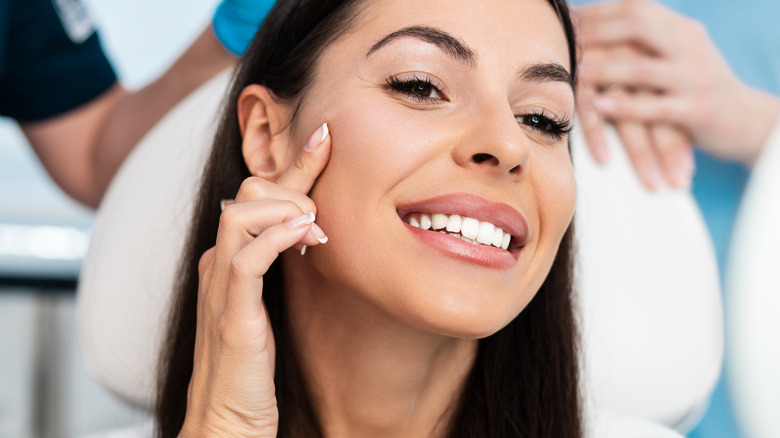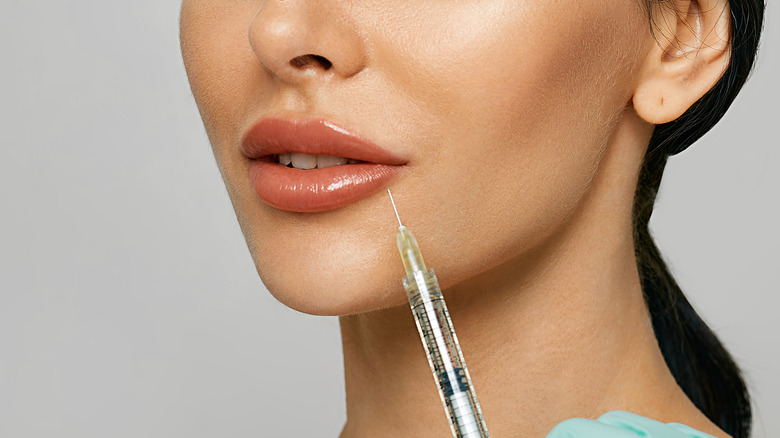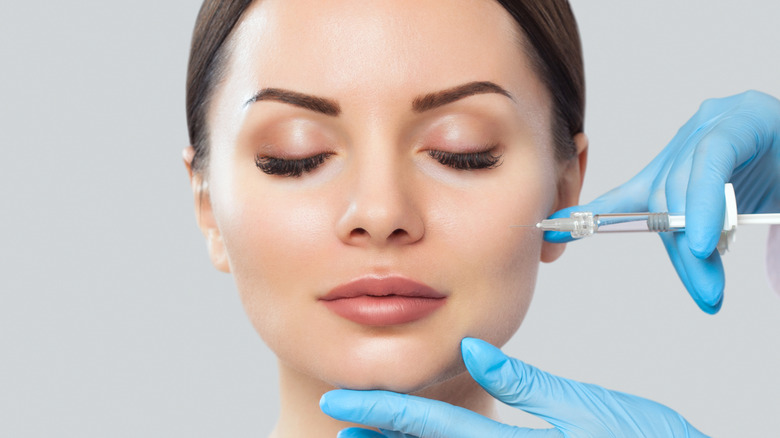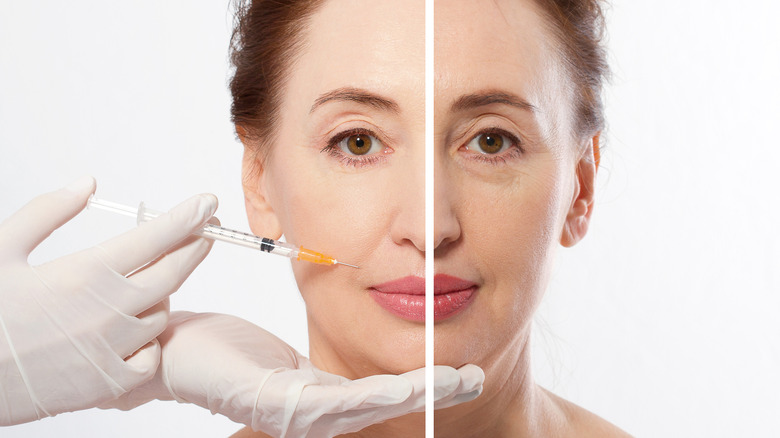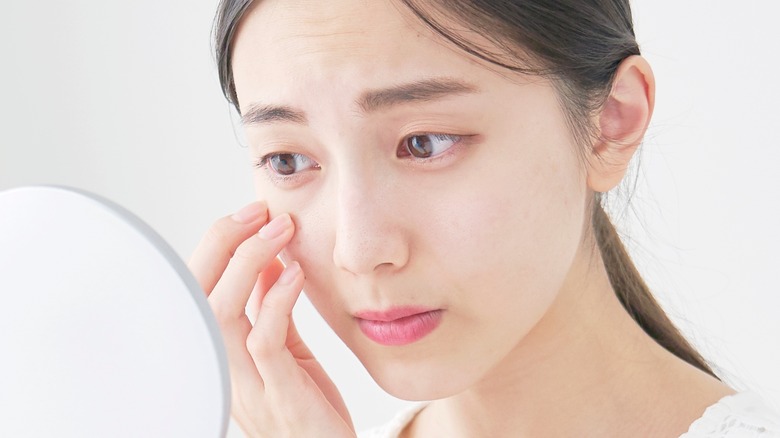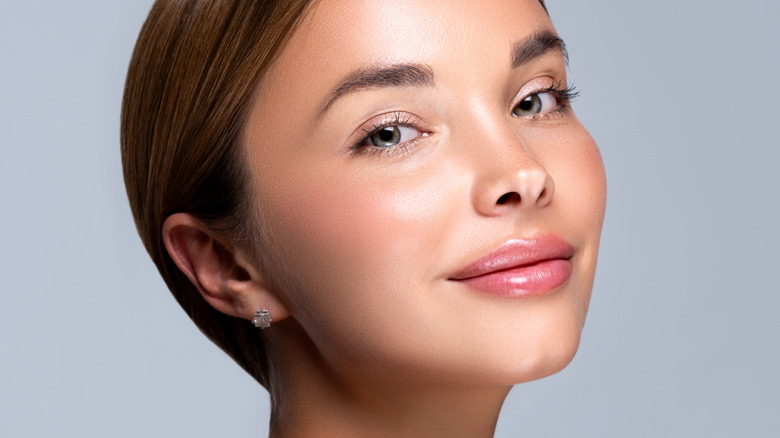Your Guide To Hyaluronic Acid Fillers
If you have googled ways to flatten facial lines and plump sagging skin caused by volume loss due to aging, you've probably heard of dermal fillers. According to the United States Food & Drug Administration, dermal fillers are jelly-like substances injected under your cheeks, lips, jawlines, and eye area to create a fuller, smoother appearance. Minimally invasive, injectable dermal fillers are regulated as medical devices and boast temporary effects. There are different types of dermal fillers on the market, including hyaluronic acid fillers (JUVÉDERM and Restylane) and non-hyaluronic acid fillers involving materials such as polycaprolactone (Ellansé) or calcium hydroxyapatite (Radiesse). Dermal fillers developed with synthetic hyaluronic acid are usually being the most recommended option for first-timers.
A naturally occurring sugar molecule found in the dermis, hyaluronic acid has the ability to bind water and soak up to 1,000 times its own weight of water, explains aesthetic practitioner Dr. Joanna Chan in a Q&A session with Human. Like collagen and elastin, hyaluronic acid depletes as we age, and we need to get more of this "plumping agent" into the skin and joints to maintain their moisture and integrity. And this is where hyaluronic acid fillers come into the scene. You're never too old for a makeover, and fillers are one effective way to turn back the clock. If you're looking for a minimally invasive method to plump your skin up and elevate your features, you're in the right place. Below, check out your ultimate guide to hyaluronic acid fillers.
How is hyaluronic acid injected
A dermatologist will evaluate the conditions that need to be treated and go over your medical history before administering an injection of hyaluronic acid filler. The FDA has not approved injectables or dermal fillers for use by women who are expecting or breastfeeding. If there's a history of anaphylaxis, pigmentation disorders, or severe allergies, the physician might not provide the treatment until your conditions resolve. Those who take blood thinners such as aspirin or ibuprofen will be recommended to stop using them two weeks before their injection. To avoid the risk of infection, dermal fillers shouldn't be administered right after laser therapy, chemical peeling, or microdermabrasion, either.
During a hyaluronic acid filler procedure, your dermatologist will disinfect the site of injection and puncture your skin with a fine needle, and then inject a tiny volume of hyaluronic acid into the tissue. Dermatologist and filler expert Claire Wolinsky tells Who What Wear: "Part of how we do fillers and how we're trained on fillers is that we look at the fat pads of the face, how they age and how they descend with age, and we re-inflate them because they shrink and they go down." According to Dr. Dirk Kremer from Harley St. Aesthetics, your doctor may administer an injection of local anesthetic or give you pain-relieving ointment depending on your pain threshold and the intended site of injection to keep you comfortable throughout the procedure.
Are hyaluronic acid fillers reversible
Generally speaking, hyaluronic acid fillers are safe within the skin, as long as you are the right candidate for the treatment and the dermatologist who administers the product to you is well-trained and experienced. Hyaluronic acid fillers have been used for the augmentation of pre-jowl sulcus, cheeks, and lips, and treatment of nasolabial folds, wrinkles, and fine lines around the mouth. While individual results vary, most patients can expect to see the full effects within 24 to 48 hours after their injections, according to Yarish Plastic Surgery. But what if you are not happy with what you see in the mirror afterward?
Fortunately, a major advantage of hyaluronic acid fillers is that they are reversible through the injection of hyaluronidase into areas that necessitate partial or complete removal of fillers, according to a study in the Dermatology Online Journal. Therefore, you don't have to worry about being stuck with less-than-desirable results until they fade over time if you opt for hyaluronic acid fillers. Meanwhile, plastic surgery and Botox procedures cannot be easily reversed. If you're unhappy with the outcomes, you may resort to alternative remedies to balance out the effects or improve the appearance of the treated spots, but the undoing or remedying process can be expensive and unpleasant.
How long do hyaluronic acid fillers last
According to Miami Skin & Vein, the longevity of your fillers depends on various factors, such as the type and amount of filler used, its particle size, the sites of injections, and the metabolism of the patients. A hyaluronic acid-based filler can last up to 12 months or even longer, according to Mabrie Facial Institute. The expected lifespan of hyaluronic fillers carries potential longer-lasting effects from a significant stimulation of the body's natural collagen production.
For lip augmentation, the results from using fillers such as Restylane, Restylane Silk, and JUVÉDERM can last up to a year. For cheek augmentation, the results can last up to 15 or 24 months, with a follow-up treatment every seven to 12 months required to maintain the plumping effect. To amplify the results of hyaluronic acid fillers, consider using hyaluronic acid-based topical products in your daily skincare routine to further hydrate the outer layers of the skin and keep your complexion youthful-looking.
Side effects of hyaluronic acid fillers
Like any other cosmetic procedure, hyaluronic acid-based fillers carry risks and complications. However, a majority of adverse effects from the administration of these fillers are mild and short-lived. According to a study in The Journal of Clinical and Aesthetic Dermatology, side effects common to hyaluronic acid-based injectable fillers include swelling, redness, bruising, and pain at the injection site. Swelling, itchiness, and mild bruising are normal reactions, which will go away in a matter of days. Some patients injected with a hyaluronic acid-based injectable reported nodule formation caused by excess filler or inflammation. To keep the growth under control, healthcare providers often recommend systemic steroids, intralesional steroids, antibiotics, or hyaluronidase. Physical excision and drainage are possible treatments for removing excess fillers in more severe cases.
The most severe complication pertaining to the injection of hyaluronic acid fillers, according to a study in the Journal of Dermatology & Dermatologic Surgery, is vascular occlusion. Characterized by a blockage of a blood vessel and progressive bruising, vascular occlusion can ultimately result in skin death or even blindness if left untreated. Since the prevention and management of complications have a lot to do with the skills of your dermatologist and how you manage the aftercare of the treated areas, make sure you go to a reputable service provider and heed post-procedure tips.
What not to do after a hyaluronic acid filler
How you take care of your face after a hyaluronic acid filler injection can make or break the results. Six to 10 hours after treatment, refrain from drinking alcohol or exerting yourself physically to minimize additional bruising, per Sonata Aesthetics & Med Spa. Until the initial swelling and redness have dissipated, avoid exposing your face to hot environments or activities such as hot tubs, saunas, sunbathing, and tanning. You can return to normal activities after 24 or 48 hours when your bruising and swelling have largely dissipated.
Your healthcare provider will prescribe you topical products to reduce post-procedure bruising, such as Lidocaine or Arnica. In addition, make sure to drink plenty of water to keep your skin hydrated and reduce swelling while boosting the effect of hyaluronic acid fillers. Exposing your filler-injected skin to the sun can exacerbate redness and bruising, so be sure to apply a liberal amount of broad-spectrum sunscreen with SPF 50 or higher and protective clothing before stepping into the sun. In response to a query on aftercare tips on RealSelf, dermatologist Laurie Jacobson advises not playing a woodwind or brass instrument for a day or two if you have lip fillers as well as avoiding wearing anything that applies pressure to the injected site, such as glasses.
